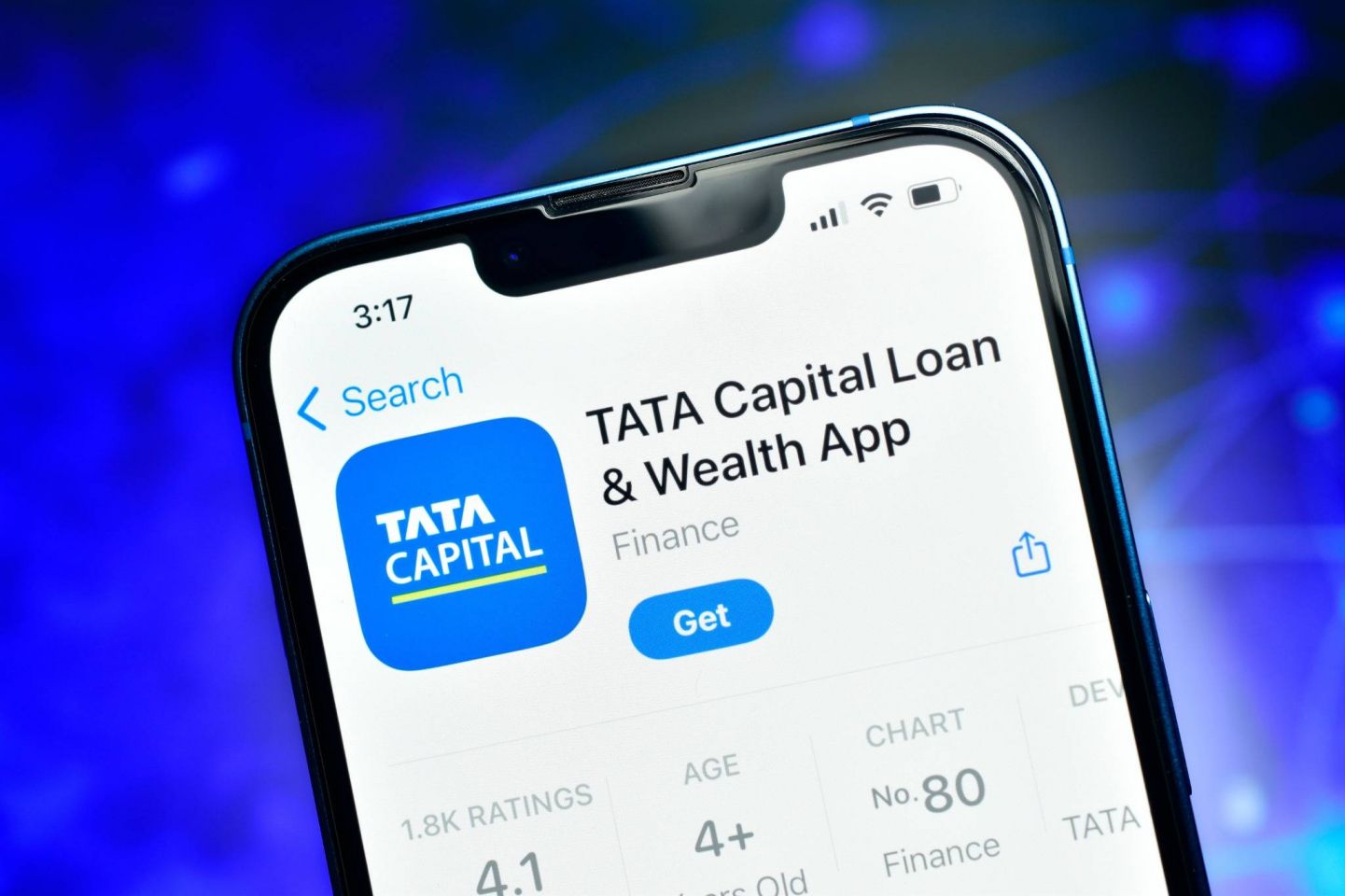Tata Capital IPO: how to trade Tata Capital shares

Learn about Tata Capital and the IPO, the factors that may affect its share price, and how to trade Tata Capital stock via CFDs when it lists.
IPO stocks are often highly volatile, and early trading can involve rapid price swings and significant risk.
Create an account Open a demo account
When was the Tata Capital IPO date?
Tata Capital, the financial services arm of the Tata Group, launched a ₹15,512 crore (~$1.75bn) initial public offering (IPO). The IPO opened on 6 October 2025 and closed on 8 October 2025, with shares scheduled to list on 13 October 2025.
IPO structure and valuation
- Fresh issue: ~21 crore new shares.
- Offer for sale (OFS): ~26.6 crore shares, including part exits by Tata Sons and IFC.
- Total issue size: ~47.6 crore shares.
- Valuation: $15 billion.
Why now?
The IPO was driven by both regulation and strategy:
- Mandatory listing: the Reserve Bank of India classified Tata Capital as an ‘upper-layer’ NBFC in 2022, mandating a stock exchange listing by September 2025.
- Capital adequacy: the fresh issue augmented Tier-1 capital, supporting loan growth while maintaining regulatory ratios.
- Strong market backdrop: India’s IPO pipeline reached record levels in 2025, with SEBI streamlining approvals and strong institutional demand.
- Peer comparisons: following large NBFCs like HDB and Shriram Finance, Tata Capital presented itself as a diversified player in the NBFC space, in contrast to peers with more concentrated portfolios.
Investor reception
Prior to the IPO, Tata Capital conducted domestic and international roadshows. Global sovereign wealth funds, US pension plans, and large mutual funds participated in anchor investments.
Tata Capital's IPO became the largest public debut by the Tata Group since Tata Technologies in November 2023. It reflected the conglomerate's wider ambition to unlock value across its unlisted arms whilst adhering to regulatory demands.
What is Tata Capital?
Tata Capital, founded in 2007 and headquartered in Mumbai, is a diversified non-banking financial company (NBFC) under Tata Sons. It lends across retail, SME, corporate, and infrastructure, and distributes wealth/insurance products. The group operates nationally through 900+ branches and a large digital footprint.
The platform spans Tata Capital Financial Services (TCFSL), Tata Capital Housing Finance (TCHFL), and Tata Cleantech Capital (TCCL). In 2023 the CCI approved the merger of TCFSL and TCCL into Tata Capital (TCL) to simplify the group; RBI subsequently approved conversion from NBFC-CIC to NBFC-ICC as part of the simplification.
TCCL – created with IFC – is India’s first private-sector institution focused solely on clean/green finance (utility-scale solar, wind, water treatment, e-mobility), giving Tata Capital differentiated access to project finance in the energy transition.
Third-party investor summaries and company materials put the physical network at 900+ branches (Forbes, 7 April 2025) and 7m customers (Forbes, 29 September 2025); the company has publicly signalled ambitions to expand toward ~1,000 branches (aided by digitisation).
Key milestones in Tata Capital’s history
- 2007 – founded as a wholly-owned subsidiary of Tata Sons.
- 2010s – expansion into housing finance, SME lending, and distribution services.
- 2022 – classified as an ‘upper-layer’ NBFC by RBI, triggering mandatory IPO.
- 2024 – gross loan book grows at 37% CAGR to ₹2.26 lakh crore.
- 2025 – pre-IPO rights issue of ₹1,504 crore fully subscribed by Tata Sons.
- 2025 – completes IPO, listing on 13 October 2025 listing.
Tata Capital’s key features
- Diversified portfolio – consumer, commercial, housing, and infrastructure lending.
- Subsidiary structure – multiple arms catering to niche verticals like clean finance.
- Tata ecosystem integration – cross-selling with Tata Motors, Tata Housing, and other group companies.
- Pan-India reach – extensive branch and digital presence.
- Trust and governance – backed by Tata Sons’ reputation.
Tata Capital’s strength lies in combining the credibility of the Tata brand with a diversified NBFC model. Subsidiaries like Tata Cleantech Capital position it to capture India’s green finance boom, while Tata Housing Finance ensures relevance in the fast-growing mortgage market.
How does Tata Capital make money?
Tata Capital earns through a blend of interest income and fee-based services.
| Revenue stream | Description |
|---|---|
| Interest income | From consumer loans (home, auto, personal), SME credit, and infrastructure finance. |
| Fee income | Wealth management, insurance distribution, mutual fund sales, and credit cards. |
| Green finance | Sustainable project financing via Tata Cleantech. |
| Cross-sell synergies | Eg, vehicle loans bundled with Tata Motors dealerships. |
Financial performance
- Gross loan book (FY25): ₹2.26 lakh crore (+37% CAGR).
- Profit after tax (FY25): ₹3,647 crore (vs. ₹3,029 crore in FY23).
- NPAs: Gross 1.9%, Net 0.8% – among the lowest in the NBFC sector.
Capital use
IPO proceeds could:
- Reinforce Tier-1 capital.
- Fund expansion in housing finance, SME lending, and green projects.
- Enhance digital platforms for consumer and wealth businesses.
Unlike peers such as Bajaj Finance, Tata Capital is not concentrated in one lending vertical. Its diversified income stream – interest, fees, and investment products – provides resilience against cycles.
What might influence the Tata Capital stock price?
Tata Capital's stock price performance will depend on both internal execution and broader market forces.
Macroeconomic and sector trends
India's credit environment remains supportive, backed by steady GDP growth and strong liquidity across banks and NBFCs. Interest-rate decisions by the Reserve Bank of India and overall funding costs remain key market focus areas. Lower rates could benefit lenders like Tata Capital through wider margins and stronger loan demand, whilst surprise rate hikes could squeeze profitability and weigh on valuations. India's equity markets have been broadly favourable to large IPOs, with SEBI streamlining approvals and a full pipeline of listings. However, comparisons with other NBFCs may keep valuations in check.
Company fundamentals
Investors will be watching closely to see how quickly its loan book grows and how well it manages risk along the way. Analysts estimate that total loans could reach around ₹2.2 lakh crore by the end of FY25. But size isn’t everything – long-term performance will depend on how well the company controls non-performing assets and credit costs as the portfolio matures.
Tata Capital’s strength lies in its mix of lending areas, including personal, auto and home loans, secured housing finance through TCHFL, SME lending where returns are attractive but risks need careful management, and green finance via Tata Cleantech, which some see as a long-term area of growth. Ultimately, its ability to manage collections, provisioning and underwriting will play a key role in how the market values the stock.
Competition and differentiation
Benchmarks like Bajaj Finance, Shriram Finance, Cholamandalam and HDB shape investor expectations on AUM growth, cost of funds, opex efficiency, digital origination and cross-sell. Tata Capital’s advantage is brand trust and group linkages (eg, auto loans with Tata Motors dealer networks) and a cleaner governance narrative, but investors will still demand proof of unit economics at scale versus the very best NBFC operators. (Peer comps and sentiment have also spilled over into unlisted share moves in 2025, underlining how fast opinion can shift on pricing.)
Regulatory and governance backdrop
Being tagged as an 'upper-layer' NBFC raises the bar on risk management, capital buffers, liquidity coverage and governance. The IPO was partly about codifying public-market discipline. Meeting regulatory deadlines and maintaining compliance standards will be perceived as positive signals; any slippage or surprises on compliance could weigh on sentiment. Legal and policy commentary suggests that most upper-layer NBFCs work towards mandatory listing via designated routes.
Investor sentiment and trading behaviour
Anchor participation by global institutions will strongly influence early trading. Analysts expect significant retail interest, with parallels drawn to Tata Technologies' listing in November 2023. Continuous coverage of market developments and expert analysis can help investors stay informed about evolving market conditions and regulatory changes that may affect NBFC performance.
You can keep your finger on the pulse of the markets with expert insight from our in-house analysts. Check out our news and analysis section for more.
How to trade Tata Capital shares via CFDs
Following its 13 October 2025 listing, Tata Capital will be available for trading via contracts for difference (CFDs).
Steps to get started
- 1. Choose a platform
Capital.com provides CFDs on major stocks. - 2. Open an account
Verify identity and suitability. - 3. Deposit fundsVia card, bank transfer, or e-wallet.
- 4. Track performance
Monitor share price movements and company announcements. - 5. Go long or short
Speculate in either direction, using stop-loss* and take-profit orders.
Remember, newly listed stocks can be highly volatile, especially in the early days of trading. CFDs give you the flexibility to act on price swings in either direction, but remember that leveraged trading can amplify losses as well as profits. As always, it’s important to set clear risk-management parameters and stay informed with expert insights available through Capital.com’s platform and app. Past performance is not a reliable indicator of future results. Learn more about contracts for difference in our CFDs trading guide.
*Standard stop-loss orders are not guaranteed. Guaranteed stop-loss orders incur a fee when activated.
Which Indian financial services stocks can I trade?
With Tata Capital set to list on 13 October 2025, traders can consider these peers:
- HDFC Bank (HDB) – India’s largest private lender.
- ICICI Bank (IBN) – India’s largest private-sector bank by market cap; closest peer for Tata Capital’s retail/SME lending.
- Trade iShares MSCI India Small-Cap ETF (SMIN) – tracks Indian small-cap companies, including fast-growing finance and consumer lenders.
FAQ
Who owns Tata Capital?
Tata Capital is majority-owned by Tata Sons (around 90% pre-IPO). IFC holds a minority stake. Post-IPO, Tata Sons remains the controlling shareholder.
How big was the IPO and what’s the structure?
The total issue size was ₹15,511 crore, split between a fresh issue (~21 crore shares) and an offer for sale (~26.6 crore shares) by existing holders.
When will Tata Capital list?
Tata Capital lists on 13 October 2025, following an IPO that ran from 6-8 October 2025.
Why is Tata Capital listing now?
Tata Capital is listing now because RBI requires upper-layer NBFCs to list within three years; the deadline was September 2025. The IPO also boosts Tier-1 capital for growth.
Discover more upcoming IPOs
Stay informed on upcoming IPOs, market trends, and the newest trading opportunities

Gemini Space Station IPO
